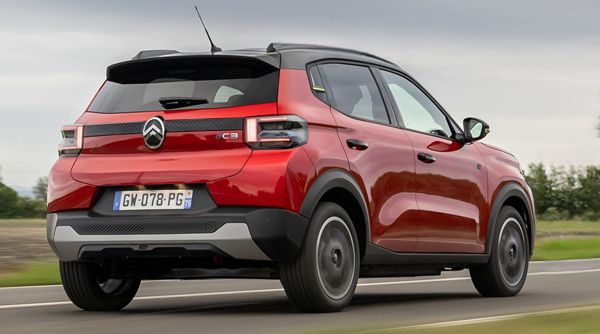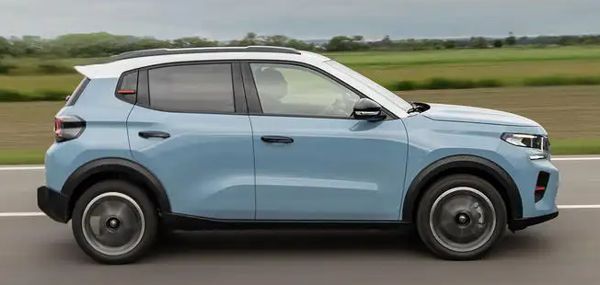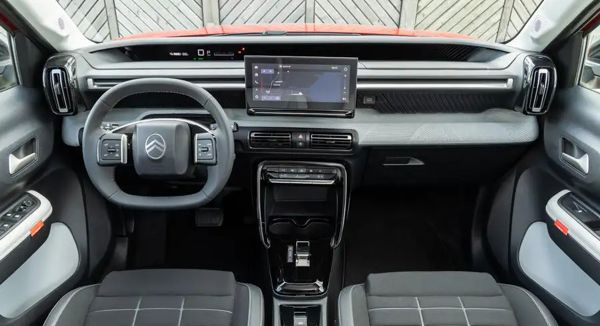Published
on 24
May 2024
|
All rights reserved.
|
|
|
 |
|
New
C3 major on practicality and value.
|
|
It is sad to see the path
Citroen has been taking over the last 2 decades. In the 1990s it still
produced some truly unique and advanced cars such as XM and Xantia
Activa. Even though investment in technology scaled back from the early
2000s, it still excelled in innovative design and packaging, as evident
in Xsara Picasso and C3 Pluriel. However, since then not many Citroen
cars left impression in our mind. The 2014 C4 Cactus might be an
exception, but even itself was withdrawn from production sooner than
expected, leaving a rather forgettable model line-up that consists of
some strange-looking hatchbacks and crossovers. You notice that they
were all built on Stellantis’ global platforms, which is
understandable, but they were made to be conventional and cheap to
produce because Citroen has been repositioned to be a value brand of
the group. You know, when the top priority is value for money, it is
difficult to talk of innovation (which always involves risks) and
uniqueness (because unique means inferior economy of scale).
The 4th generation C3 is such a vehicle. In terms of competitiveness,
it is perfectly fine, because it satisfies most buyers’ needs at a very
attractive price. In terms of desirability, I’m afraid not much to talk
about. It looks bland, runs slowly and steers without enthusiasm. Not a
driver’s car in any way.
 |
|
"Smart
Car" platform isn't exactly smart, but smart to cut costs.
|
|
Cheap cars are not necessarily dull-looking, but unfortunately the new
C3 is. It tries to resemble an SUV but it is actually more a tall
hatchback in heart and bones. It inherits an SUV-style blocky shape,
with a vertical nose, flat bonnet, some rubber claddings and fake roof
rails. There is nothing wrong with a tall and boxy body in the interest
of interior space, just as Japanese K-cars know, but you can always do
wonder in styling to make a tall and boxy car look stylish, just as
Suzuki Hustler proved. The new C3 fails to do that. It lacks French
imagination just like the current Fiat Panda lacking Italian flair. The
ugly oval-shape double-chevron logo doesn’t help either.
The car is not built on the CMP platform of Peugeot 208 etc. Instead,
it rides on a new low-cost platform called “Smart Car”, which is to be
shared with the cheap small cars Stellantis to be built in India and
Latin America. The number of parts is said to be 30 percent fewer than
its predecessor, which sounds good, but the flipside is cutting options
and upgradability. There is only one engine available – yes,
predictably the PSA 1.2-liter three-cylinder turbo with 100 horsepower
only. There are 2 EV options with different battery sizes (33kWh or
44kWh), but they employ cheap lithium iron phosphate (LFP) chemistry
and are supplied by Chinese battery maker SVOLT (a spin-off from Great
Wall Motors). Neither of them is offered with heat pump. No matter
which powertrain, the C3 is always front-wheel drive and rides on
twist-beam rear axle.
 |
|
Slow
and little to enjoy driving, but rides comfortably.
|
|
Predictably, the C3 is not fun to drive in any forms. The 100 hp engine
works well in town, and its 151 lbft of torque allows the car to run at
higher gears to calm down its gruffy top-end, but that’s all about it.
The e-C3’s 113hp motor is slower still, blame to its inferior torque
(just 88 lbft) as well as the 270 extra kilograms it needs to pull. It
goes without saying LFP battery has lower energy density than the more
common NMC battery, hence more weight for the same capacity.
The C3’s long suspension travel and standard hydraulic bump stops do
deliver a comfortable ride that is rare among B-segment small cars.
Refinement on motorway is hampered by excessive wind noise and tire
roar, but that is to be expected for most small cars. Spirited driving
is discouraged by a lifeless steering, lots of body roll and
understeer, although its body motions are progressive, and there is
plenty of grip and stability to lean on. As an urban car its
performance and handling are perfectly acceptable. Just don’t expect
any inspiration to get from the driving.
Better is the cabin. It is one of the few B-segment cars that can
accommodate four six-footers without compromising legroom, thanks to
seating the occupants 100mm higher than conventional hatchbacks. The
tall roof (1577mm height) offers a lot of headroom, too. As for e-C3,
the battery is mounted under floor but mostly under the rear seat, so
that rear passengers don’t need to have their legs raised as in some
EVs. The 310 liters of luggage space is also quite generous for its
class, although high boot lip make loading a little difficult.
 |
|
Cabin
is spacious and well laid out.
|
|
As expected, for a value car the cabin is finished with mostly hard
plastics, but it doesn’t feel cheap. The dash is well laid out, with
instrument panel incorporated at the top of the dash – Citroen calls it
HUD but obviously it is not – so that the small and square steering
wheel does not block the view to instrument, a trick Peugeot should
learn. There are physical switches for climate control, above which is
10.25-inch touchscreen whose infotainment software is passable
(entry-level model gets a smartphone cradle instead to cut cost). The
seats are pretty comfortable yet supportive.
Price is its strong card. It starts from £18,000 for petrol
engine, rising to £22,000 for the 44kWh e-C3. The latter
undercuts all B-segment EV rivals in Europe by several thousand pounds
yet offers a competitive range of 200 miles (or about 170 miles in the
real world) and 100kW quick charging rate. Building the car in Slovakia
certainly helps, but equally thanks to the low-cost platform. That is
probably the smartest part of the Smart Car platform.
|
Verdict:    |
|